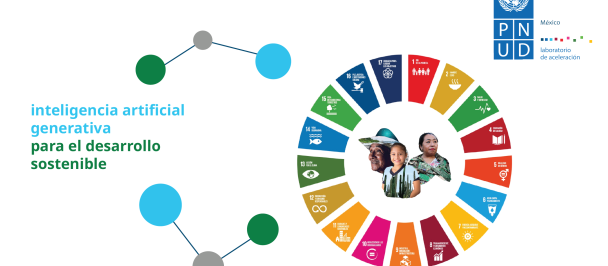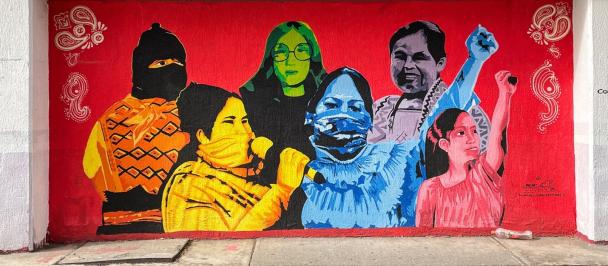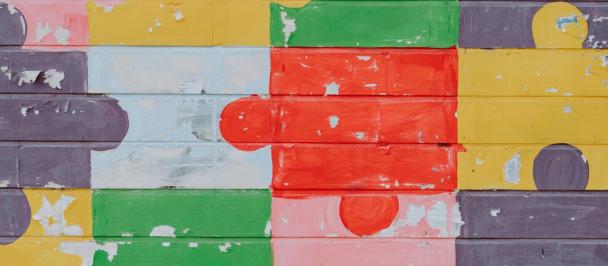Photo by Alex Knight on Unsplash
A look at the exploration phase of a learning cycle focused on designing technology solutions to improve care for women and girls at risk of violence in Mexico City, and the solution chosen for the experimentation phase
- This is our second blog post (here you can check the first one) on the collaboration between UNDP Mexico Acceleration Lab (AccLab MX), UNAM Civic Innovation Lab (CivicTech Lab), and the government of Mexico City to improve services for the care and prevention of violence, and the promotion of women's physical, economic and political autonomy in the context of a COVID-19 health emergency.
Finding the exact point where the lab can create value
The learning cycle with the Ministry of Women of Mexico City began with the conviction to generate technological solutions that would provide virtual assistance to the staff working in LUNA centers and, as a result, improve their capacity to attend to women and girls at risk of violence. However, since the beginning, we realized that a tool to provide virtual assistance could take many shapes. Hence, the first challenge of this cycle became refining the concept and the route that the exploration would take. That is, to identify the exact point where the intervention effort should be placed, something that we, at Acceleration Labs, know as finding the "sweet spot": which would be the area of opportunity to be addressed, having as a goal that our work provides the greatest value and transformational power.
As a result of the initial sensemaking phase, in which we conducted a focus group and interviewed the staff working at LUNAS, we discovered that there were multiple areas of opportunity in which it would be interesting to incorporate technology to improve the way the staff implemented their care protocol. From that moment on, the task became to identify the areas where we would focus our intervention and, at the same time, will help us shape the technological solution that we would later develop.
Current status and the ideal situation
The starting point was to recognize the current state of the LUNAS centers in terms of their use of technology. Then, we will follow up on care cases and define, in a participatory manner, an ideal state to be reached. In other words, to problematize the situation and identify which improvements would be desirable.
The starting situation can be summarized in the following points:
- LUNAS centers, as is common in local government offices, operate in a context of limited human, financial and technological resources.
- LUNAS centers make a weekly report to their headquarters to know, among other things, the number of users, to keep a history of their cases, and to know the type of services each one receives (psychological care, legal support, or assistance from social workers).
- Each LUNA makes a weekly report in a new copy of a predefined spreadsheet file (EXCEL type). These files are sent to the central offices by e-mail to be compiled into a global report of all LUNAS.
The implications for reaching the ideal situation in each of the points listed before:
- Agile and simple forms: the process of filling out follow-up forms should be as agile and simple as possible to thus take advantage of a limited resource which is staff time, both in LUNAS and in central offices, and that people can devote more time to other tasks.
- Information design: reports generated should be easy to understand, focus on what is most strategic for decision making, and, in addition to counting the number of women attended and services provided, serve to monitor program impact in terms of reducing the violence risk level among women receiving care.
- Efficient integration: the compilation should be efficient and involve as much as possible digital technologies to which the Ministry and UNDP have access, to improve user experience and make the process less prone to human error.
Choosing an alternative
As to identify these issues, delimit areas of opportunity, and devise the most relevant potential solutions within the scope of this project, the Lab conducted a qualitative analysis workshop with CivicTech Lab. As a result of this process, two options were available and voted on by the entire team involved in the process.
One way forward was to design a virtual assistant in the form of a chatbot: a virtual tool with the ability to answer frequently asked questions and speed up the filling out of forms with which staff and users could interact. The combination of interfaces and artificial intelligence would have the capacity to lighten the workload of LUNAS staff, addressing cases of women whose issues were not urgent and, in addition, assisting with pre-filling of forms. This option was not chosen.
Instead, it was decided to redesign the client follow-up tool and standardize the reporting process to central offices that LUNAS centers carry out. The above uses digital cloud storage technologies to feed a Dashboard with real-time data. This tool for weekly follow-up of LUNAS users and the Dashboard was considered by the team as a prerequisite to advance in the digitalization of LUNAS, to unify the reporting forms, and later, to be able to implement a chatbot as the one that was devised.
To evaluate the success of the project, a series of basic design principles were defined for the new Tracking Tool and Dashboard that would provide virtual assistance to the staff of LUNAS, as summarized below:
- Lighten the administrative workload of staff and keep user case records up to date;
- Be easy for staff to adopt and take advantage of the digital skills staff already have; and
- Enable strategic decision-making, both in individual LUNAS and at the central office level of the Ministry of Women.
With these three principles, a clear idea of the areas of opportunity to be addressed and the team's consensus on the objectives to be met by the final product, we moved on to the experimentation phase. In this stage, through a process of trial and error, we designed each of the attributes of the new Tracking Tool and Dashboard. In our next post, we will tell you more about this stage and the lessons learned about the digital transition process of a government office such as the LUNAS of Mexico City.
Do you have experience in digital transition processes of public offices and "Smart government"? Do you know the work done by LUNAS in Mexico City or do you want to share with us ideas on how technology can be incorporated to improve the protocols of care for women and girls at risk of violence? Write us, we want to hear from you!

 Locations
Locations





